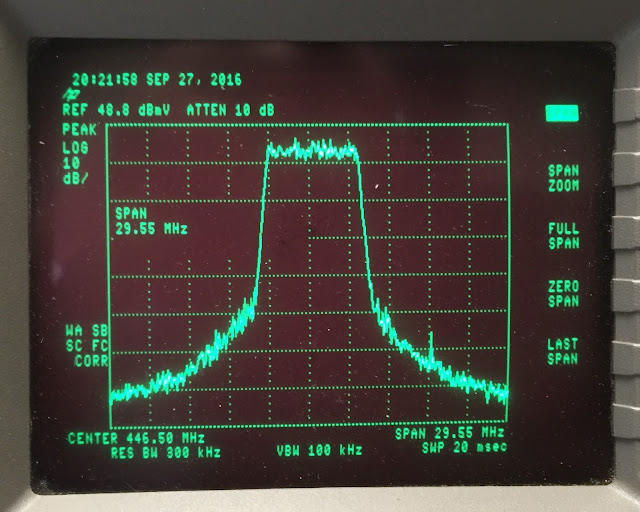Duplexer DVB-T TX filter: Low bandwidths

Duplexer DVB-T TX filter; Low bandwidths: 2 and 1 MHz. Introduction The duplexer DVB-T TX filter was adjusted to see if it would work at low bandwidths, specifically 2 and 1 MHz at 70 cm. It achieved this easily, but with a small increase in losses. Testing The duplexer was original adjusted for a 7 MHz bandwidth with a spectrum analyser and tracking generator. I only moved the lower frequency notch, one side of the duplexer. At the request of a USA operator, wanting to work DX, I readjusted the filter for a 2 MHz bandwidth. This was possible, with with little effect on losses. For interest, I adjusted it to a 1 MHz bandwidth, again possible, but with slight losses. Discussion The filter works surprising well at the lower bandwidths. I thought losses may have been higher. The losses are not a major issue as the DVB-T amplifier can be driven a little harder to make up for them, and possible even more because of the filter. Notch cavity filters could be ...

